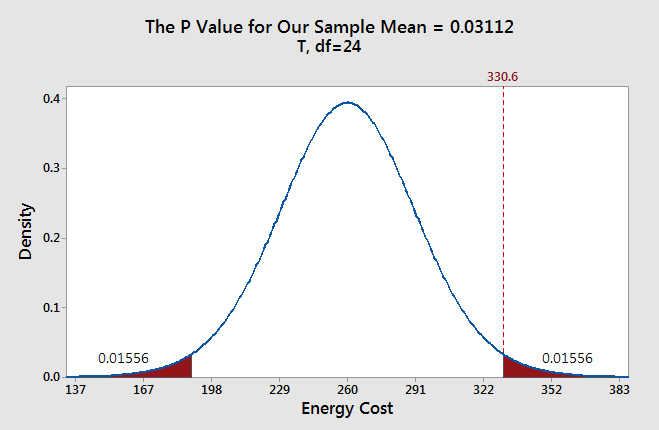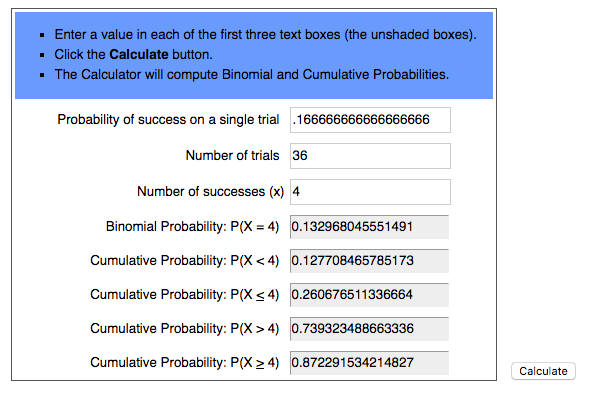What is a p-value?
Introduction

At a recent A.I. meet-up in the Twin Cities, I found myself talking to a couple of other folks. I made a statement about how so many people mess up the concept of a confidence interval. See this post for more details. One of the individuals mentioned that when he interviews potential candidates for positions, he often likes to ask them about what their definition of a p-value is. I assumed that the p-value he was talking about was the one that I am familiar with from Bayesian techniques (see this post) where P(A) is the probability of event A occurring.
I knew that couldn’t be it, and so I sheepishly looked at my shoes. Not one to walk away from not knowing the answer to something that I should, this post is my “mea culpa”. So, without further ado, lets explore the concept of a p-value.
Probability and Statistics
I think of probability as going from a known population and making statements about the likely makeup of samples. For instance, you have a bag with 25 green and 37 red M&Ms. Probability provides tools for answering questions like “How many red and green M&Ms are you likely to have if you pick out 4 at random.
I think of statistics as going from a sample and making statements about a population. Statistics also allows us to test hypothesis about a population from sampled values. It is in this type of a statistics problem that we encounter p-values.
Let’s look at an example:
Six Sided Die Problem
Let’s say that I have a 6 sided die. Is this die fair if I get four sixes when I role the die a total of 36 times?
This is a binomial distribution problem and can be written as so:
X ~ B(36,p)
or “The distribution X is a Binomial Distribution with 36 trials and a probability of p.” This is a binomial problem because there are two cases: that I rolled a die and got a 6, or I didn’t get a six.
In our problem above, if our hypothesis is that the die is fair we would expect P to be 1/6. We call this the Null Hypothesis or H0.
H0 : P = 1/6
There are two alternative hypothesis that represent the fact that the die is not fair. Based on my data, I am only concerned about the lower tail. Remember that in my test, I rolled the die 36 times, and I got 4 sixes. So, my alternative hypothesis is:
H1 : P < 1/6
In order to test this, we need one other piece of information. That information is the significance level of my test. In this case, we will use a 5% level of significance. That value is often referred to as the alpha value or ⍺.
So, we will reject our H0 if:
Reject H0 if P(x<=4 | x~B(36,1/6)) <= 0.05
In this case, I can use this handy calculator like so…

…to come up with the following:
Reject H0 if 0.260676511336664 <= 0.05
Since the above is NOT true, I DO NOT reject H0
Based on the above, there is evidence that the die is fair.
So what is the “p-value”
In the above problem, we may have been tempted to say that the “p-value” was 1/6, or the probability that we assume to be true under the null hypothesis.
But, that is not the classical definition, and is what I believe my colleague was referring to.
The Harper Collins dictionary of mathematics defines a p-value as: “the probability that a given Test Statistic takes either the observed value or one that is less likely under the Null Hypothesis. If fixed in advance, this is the significance level of the test.”
I prefer the definition from my handy and well worn copy of “Introduction to Probability and Statistics by J.S. Milton and Jesse C. Arnold…
“…the P value is the smallest level at which we could have preset ⍺ and still have been able to reject H0.” In this test, that value would have been 0.260676511336664.
Conclusion
So, there you have it. Should you run into the p-value question in an interview, you will now have this nice blog post to refer too.
I hope you have enjoyed this exploration of the basic binomial distribution and p-values. Stay tuned for more topics in data science and machine learning.